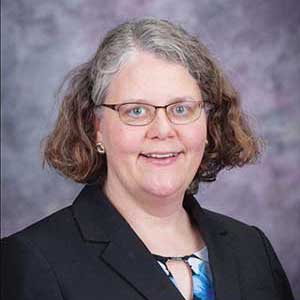By Kristan Corwin
I feel very fortunate to have a career in science, working as a physicist in Kansas.
Many people helped make it possible: My father taught me hands-on problem solving through simple woodworking. My chemistry teacher taught me to marvel at the structure of a single atom, and my college professors helped me reveal its secrets.
Building Kansas’ scientific and technical workforce requires opportunities and support for more students to build on those formative moments.
Science, technology, engineering and mathematics (STEM) jobs pay on average $75,000 per year in Kansas. And according to one prominent Kansas company, says Carly Hysell, Garmin’s public relations manager: “We need a steady supply of very talented engineers and information technology professionals. Our best source of talent is right here in our backyard.”

Kristan Corwin
In graduate school, as an apprentice to a master scientist, I learned to discover things about atoms that no one knew before. My fellow students and I did research funded by the National Science Foundation (NSF), the National Institute of Standards and Technology (NIST), and other federal agencies. My former classmates are now leaders in industry, universities and government laboratories, tackling the technical problems of our time.
Like me, many are training the next generation of scientists and engineers.
Training our students for careers in STEM is a win-win for Kansas—it gives our students opportunities and also enables us to carry out research that benefits our state.
As a physicist at Kansas State University, I develop tools that may improve agricultural yields. The project uses lasers to measure the gases above fields of crops, helping agronomists better understand the interactions of plant genetics with fertilizer and water.
My federally funded research program has propelled students from Kansas into Ph.D.-level positions as senior scientists in small businesses and government labs, working on laser-based research for private industry and the U.S. government. Having world-class research available to Kansas high school graduates in their home state has given them excellent job opportunities. The hands-on, critical thinking skills they develop open many doors, and empower them to address the most pressing challenges facing our nation in areas such as agriculture, energy, health and national security.
Our project is one example of the unique, forward-looking research funded in Kansas by the National Science Foundation (NSF), which invested $36.7 million in research in the state during the past year. These projects allow the exploration of fundamental scientific ideas that underpin American innovation and train our students for careers in STEM.
NSF research has transformed our lives here in Kansas—from the way we shop, to how we consume information, to how we receive daily weather reports. Specifically, NSF research has generated or improved barcodes, web browsers, fiber optics and Doppler Radar.
Furthermore, NSF pays dividends for the entire nation. Since the end of World War II, economists have determined that more than half of the nation’s economic growth can be traced to scientific discoveries, according to a 2014 report by the American Academy of Arts & Sciences.
My science career grew from natural curiosity, nurtured by engaging teachers. My training was made possible by federally funded research projects. Now I lead investigations using physics to improve agriculture, while in turn creating opportunities for Kansas’ students.
There are kids all across our state right now with similar desires and aptitudes, ready for a STEM career. Will similar opportunities await them?
Kristan Corwin is chairwoman-elect of the APS Division of Laser Science and professor of physics at Kansas State University. This article first appeared in the Topeka Capital-Journal newspaper.
©1995 - 2024, AMERICAN PHYSICAL SOCIETY
APS encourages the redistribution of the materials included in this newspaper provided that attribution to the source is noted and the materials are not truncated or changed.
Editor: David Voss
Staff Science Writer: Leah Poffenberger
Contributing Correspondent: Alaina G. Levine
Publication Designer and Production: Nancy Bennett-Karasik
November 2018 (Volume 27, Number 10)
Articles in this Issue

